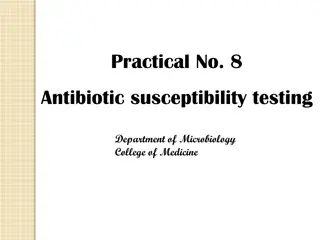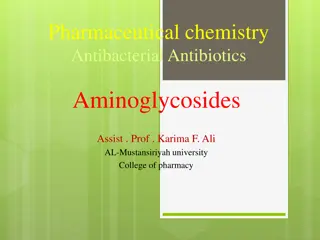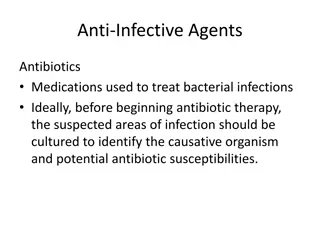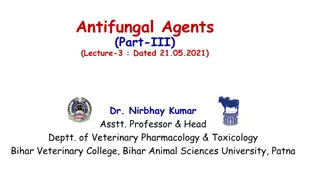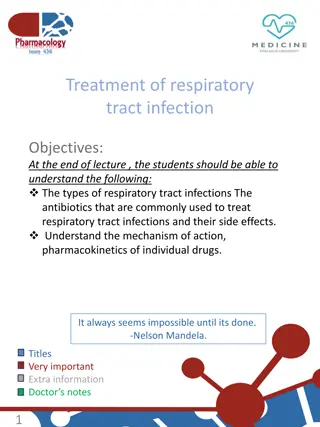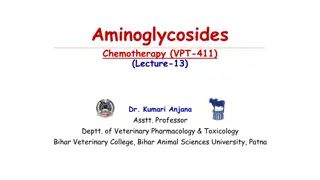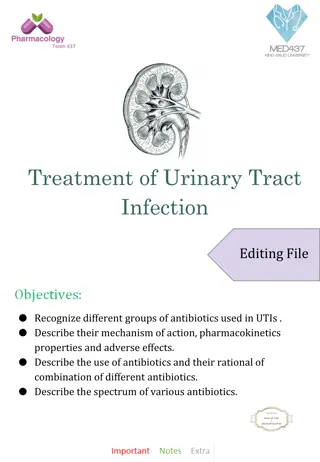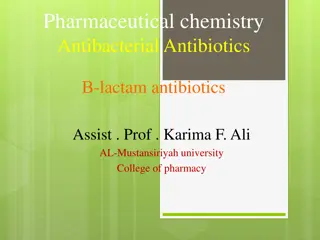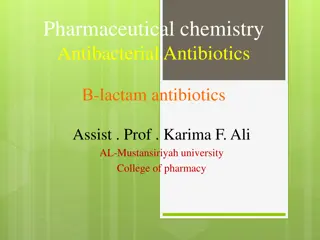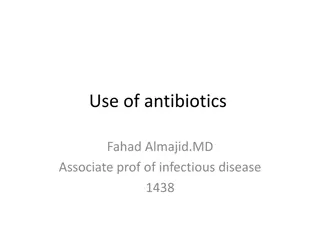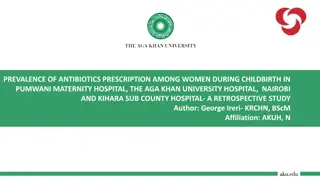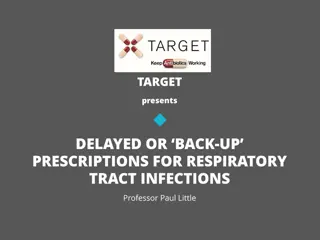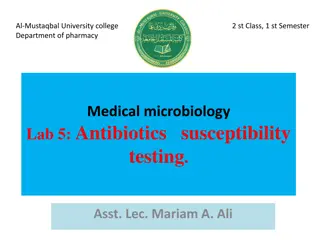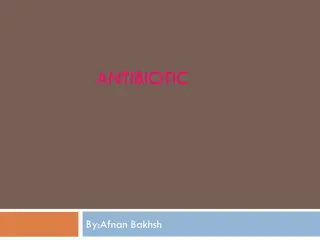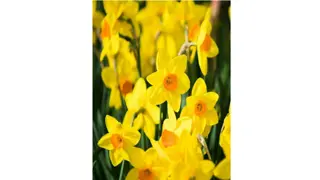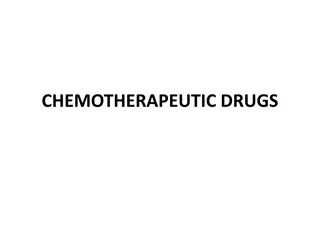Overview of Antifungal Antibiotics and Their Uses
Antifungal antibiotics are crucial medications used to treat and prevent various fungal infections such as athlete's foot, ringworm, candidiasis, and systemic infections like cryptococcal meningitis. This article discusses key antifungal medications including Amphotericin-B, Nystatin, Natamycin, and Griseofulvin, detailing their mechanisms of action, uses, chemistry, and preparations for different types of fungal infections. Images of the medications are included for visual reference.
Download Presentation

Please find below an Image/Link to download the presentation.
The content on the website is provided AS IS for your information and personal use only. It may not be sold, licensed, or shared on other websites without obtaining consent from the author.If you encounter any issues during the download, it is possible that the publisher has removed the file from their server.
You are allowed to download the files provided on this website for personal or commercial use, subject to the condition that they are used lawfully. All files are the property of their respective owners.
The content on the website is provided AS IS for your information and personal use only. It may not be sold, licensed, or shared on other websites without obtaining consent from the author.
E N D
Presentation Transcript
ANTIFUNGAL ANTIBIOTICS An antifungal medication, also known as an anti-mycotic medication, is a pharmaceutical fungi-cide or fungi-static. They are used to treat in the treatment and prevention of mycosis such as athlete's foot, ringworm, candidiasis (thrush), serious systemic infections such as cryptococcal meningitis, and others. Official drugs: 1. Amphotericin -B 2. Nystatin 3. Natamycin 4. Griseofulvin
comparison Amphotericin B (Fungizone) Nystatin A1 Streptomyces nodosus [1965] Streptomyces noursei [1950] Source Polyene macrolide antibiotics B: C27-28; C=C bond present (Total 7 double bonds; 10-OH Groups present MF: C47 H73 N O17 Polyene macrolide antibiotics [6 C=C Bonds, 10 OH groups present], =Tetraene+dienes system amino sugar= Mycosamine Chemical class Binds with ergosterol Amphoteric in nature/Narrow spectrum Binds with ergosterol ---------------- MOA Injection ( slow iv) 250mg every 6 hrs. topical-ointment, pessaries (vaginal tablets) preparation Mucormycosis, Aspergillosis, Blasto-mycosis, Candidiasis, , and cryptococcosis, visceral leismaniasis Vaginal yeast, candidiasis, diaper rash, used in AIDS patient with low CD4 cell count Uses
3. NATAMYCIN (PIMARICIN) MOA: similar to other polyene antibiotics Chemistry: Macrolide- Polyenes- antibiotics with 5 Conjugated double bonds , and 5-OH groups present. Uses: -Conjunctivitis, fungal infection in eye lids, cornea. -Yeast infection and oral thrash (Orally little/poor absorption) -Preservative in food industry Preparation: 5% ophthalmic suspension, eye drops, cream, and Lozenge
4. Griseofulvin IP Isolated in 1939 through solvent extraction of Mycelium Nomenclature: 7-chloro- 2', 4, 6-trimethoxy- 6'-methyl- Spiro [1-benzofuran- 2,1'-cyclohex[2]-ene]- 3,4'-dione MOA: Mechanism based on it s ability to interfere with cell division (particularly mitosis) in fungal cells. Particularly, griseofulvin disrupts microtubule formation It is naturally synthesized antifungal agent that is produced by Penicillium species (particularly P griseofulvin). Griseofulvin is available both for topical and oral administration, but the drug is mainly used for topical treatment of superficial mycoses. The drug is poorly absorbed by the gastrointestinal tract (GIT), and this limits their usage for oral administration. Preparation: 250mg, 500 mg tablets (orally), particle size 5micron is required for enhance absorption as required by BP and USP






